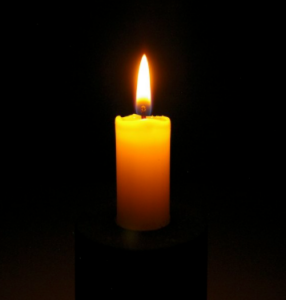This is one of those ‘coffee will kill you’ stories that points to the large body of research showing the ill effects of short blue wavelength light on human health, and in particular cells in the human eye.

Professor Jwo-Huei Jou, Department of Materials Science and Engineering, National Tsing Hua University, Taiwan says
“Blue-emission enriched light sources impose threat to the human eye and physiology, artifacts, ecosystems and (even) night skies.”
Professor Jou, a graduate from University of Michigan, Ann Arbor, has spent a good portion of his academic career researching blue light and is prepared to demonstrate (hopefully at DisplayWeek 2018 in Los Angeles) what he calls a “candlelight” organic light emitting diode (OLED at 1,918 K) emitting at a low color temperature. This is “blue-hazard free” according to Jou, when compared with cold-white LED (5,501 K) and cold-white CFL (5,921 K). Professor Jou said the light they hope to demonstrate is “…83 and 90 times safer in retina protection and 20 and 29 times better in melatonin generation, respectively.” The candlelight OLED is flicker-free, glare-free, low heat, and UV/IR radiation-free. This makes the OLED technology preferred over candles or incandescent bulbs.
The blue light risk is well documented, according to National Academy of Sciences research from as far back as 2014, and entitled Evening use of light-emitting eReaders negatively affects sleep, circadian timing, and next-morning alertness:
“We found that the use of these devices before bedtime prolongs the time it takes to fall asleep, delays the circadian clock, suppresses levels of the sleep-promoting hormone melatonin, reduces the amount and delays the timing of REM sleep, and reduces alertness the following morning. Use of light-emitting devices immediately before bedtime also increases alertness at that time, which may lead users to delay bedtime at home,”
according to the research.
The general consensus is that using portable light-emitting devices immediately before bedtime “…has biological effects that may perpetuate sleep deficiency and disrupt rhythms,” Jou continued, “with adverse impacts on performance, health, and safety.” For Jou, using blue hazard-free candle light can slow down such health issues which is why his team created what they call a “human-friendly light, designing a high number of candlelight complementary organic emitters to mimic candlelight based on organic light emitting diode (OLED)”.
DisplayMate’s Dr Ray Soneira also weighed in on the topic. In his report “Watching Displays at Night” Soneira states,
“While exposure to any significant amount of light at night can affect sleep, the color (and spectrum) of the light is a very important factor. For example, astronomers and people that work in darkroom environments know that using red lighting will not affect their eyes’ dark adaptation. It turns out that blue light is what primarily controls the eye’s response, but it isn’t all blue light but rather only a specific portion of the blue spectrum”.
Finally, device manufacturers agree. For proof, look no further than your own iPhone (night vision setting) that filters out much of the blue light and is conveniently connected to a timer to kick in after sundown. (Go to settings/display and brightness/ to the night shift tab, where a timer is available to set hours for the filter to engage.) No doubt Android-based phones have some form of this same function, and probably implemented in a more subtle, or cool and perhaps unexpected fashion (they always do).
So it looks like it’s back to candlelight for coming generations of device users hoping to avoid the killer “coffee bugs” found inside our high tech displays. Who knew my penchant for late night facebook posting was really that darn blue spectrum throwing off my more natural penchant for sleep? – Stephen Sechrist

